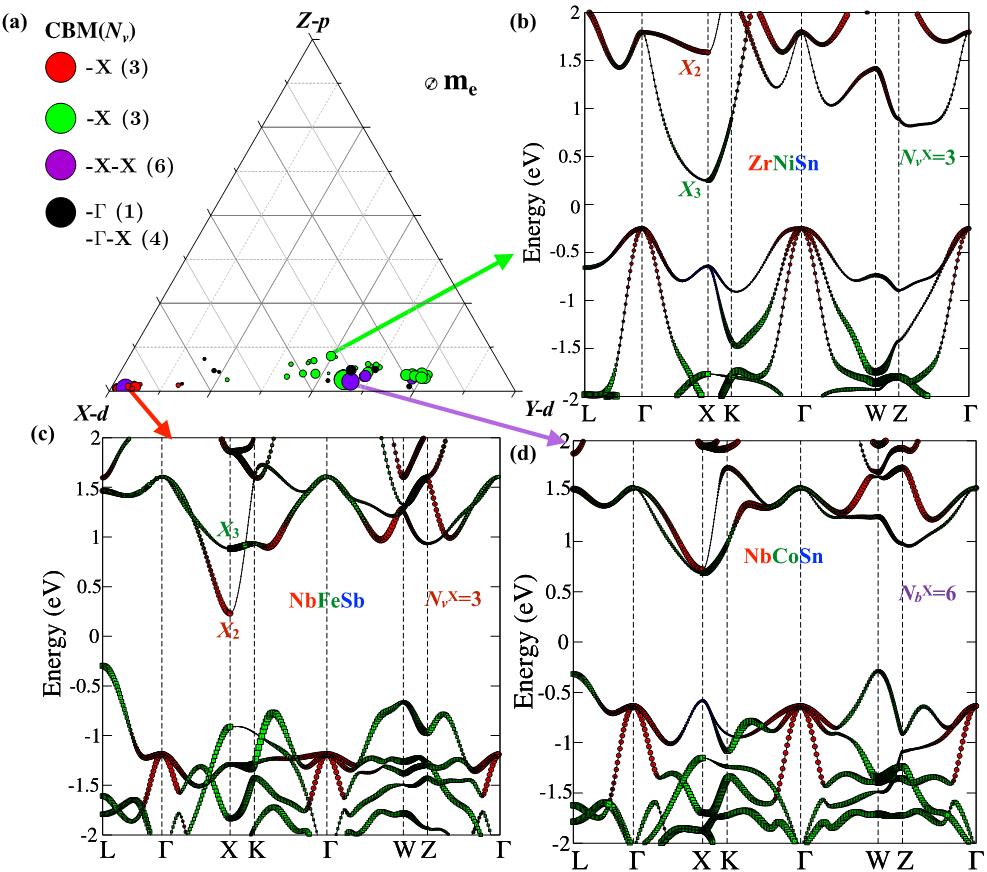
Recently, the group of professor ZHANG Yongsheng from the Institute of Solid State Physics, Hefei Institutes of Physical Science (HFIPS), Chinese Academy of Sciences (CAS) identified the orbital characteristic of conduction band edges in their new research, which provided novel insights into further thermoelectric enhancement of half-Heusler materials through.
The relevant results were published in Journal of Materials Chemistry A
Half-Heusler (HH, XYZ) compounds have been attracting much attention for thermoelectric materials. The thermoelectric properties of many p-type HH compounds have been investigated and improved by engineering the valence band degeneracy. In contrast, the improvements of n-type HH thermoelectrics have been lagging behind the p-type for a long time, due to the lack of band convergence of conduction bands at the X point (NbX). This limits not only the possible methodology to improve thermoelectric properties of n-type HH compounds but also the thermoelectric device usage using all HH compounds.
Prof. ZHANG's group studied the n-type orbital phase diagram of 69 HH compounds. The results proved that there are two competing conduction bands with very different effective masses actually at the same X point in the BZ, which can be engineered to be converged.
In this research, the two conduction bands are dominated by the d orbitals of X (with energy EX2) and Y (with energy EX3) atoms, respectively. The energy offset between the two bands depends on the difference in the electron configuration and electronegativity of the X and Y atoms. Based on the orbital phase diagram, they provide the strategy to engineer the conduction band convergence by mixing the HH compounds with the reverse band offsets. Taking alloying VCoSn (NbX=3) and TaCoSn (NbX=3) as an example, the band convergence of the mixture (V0.5Ta0.5CoSn) is significantly improved to six, which will boost the Seebeck coefficient. Additionally, the introduced mass fluctuation will scatter phonon and suppress the lattice thermal conductivity as well.
"Our work indicates that analyzing the orbital character of band edges provides novel strategies for further improvements of thermoelectric performance of HH compounds," said GUO Shuping, first author of the paper.

Fig. 1. There are two different conduction band minima (CBMs) arise at the X point (valley degeneracy NvX=3) in the Brillouin zone, one dominated by the d-orbital of X atoms (minimum at energy EX2, red sphere) and one dominated by the d-orbital of Y atoms (minimum at energy EX3, green sphere). (Image by GUO Shuping)

Fig. 2. The difference in the valence electron configuration (group number) and electronegativity of X and Y species determines the energy offset between the two conduction bands at the X (EX3– EX2) point. (Image by GUO Shuping)